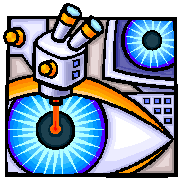The Foundation of the American Academy of Ophthalmology is promoting cataract awareness during the month of August.
![]()
 Studies have shown cataracts to be the leading cause of blindness worldwide, and the leading cause of vision loss in the United States.
Studies have shown cataracts to be the leading cause of blindness worldwide, and the leading cause of vision loss in the United States.
Why an awareness month?
In the United States treatment for the removal of cataract is widely available, but many Americans experience lack of access due to insurance coverage issues and treatment costs. Inappropriate care choices made by the patient can be a result of lack of awareness and education.
![]()
 In the area below, you will find basic information about cataract removal billing for Medicare patients.
In the area below, you will find basic information about cataract removal billing for Medicare patients.
What is a cataract?
A cataract is a clouding of the lens in the eye, the part of the eye that focuses light and produces clear images. Inside of the eye, the lens is contained in a sealed bag or capsule.
![]()
 An estimated 20.5 million (17.2%) Americans aged 40 years and older have cataract in one or both eyes, and. The total number of people who have cataracts is estimated to increase to 30.1 million by 2020.
An estimated 20.5 million (17.2%) Americans aged 40 years and older have cataract in one or both eyes, and. The total number of people who have cataracts is estimated to increase to 30.1 million by 2020.
What causes the clouding?
As old cells die they become trapped within the capsule. Over time, more cells die and accumulate causing the lens to cloud, making images look blurred or fuzzy.
![]()
 For most people, cataracts are a natural result of aging, but cataracts can occur at any age, even at birth. Non-age related cataracts can be due to a variety of causes: eye injuries, certain medications, and diseases such as diabetes and alcoholism.
For most people, cataracts are a natural result of aging, but cataracts can occur at any age, even at birth. Non-age related cataracts can be due to a variety of causes: eye injuries, certain medications, and diseases such as diabetes and alcoholism.
How are cataracts treated?
In the early stages, stronger lighting and eyeglasses may lessen vision problems caused by cataracts. At a certain point, however, surgery may be needed to improve vision.
![]()
 Cataract surgery is the most frequently performed surgery in the United States. It is estimated that 6.1 million (5.1%) have had their lens removed operatively.
Cataract surgery is the most frequently performed surgery in the United States. It is estimated that 6.1 million (5.1%) have had their lens removed operatively.
![]()
 More than 90% of the people who have cataract surgery regain useful vision.
More than 90% of the people who have cataract surgery regain useful vision.
![]()
 To see an educational video, you can follow this link to the CDC website.
To see an educational video, you can follow this link to the CDC website.

 CMS Cataract Removal Policy:
CMS Cataract Removal Policy:
o Only one unit per eye can be billed.
o Cataract removal can only occur once per eye.
o According to the National Correct Coding Initiative Policy Manual, CPT® codes describing cataract extraction (66830-66984) are mutually exclusive of one another. Therefore, only one code from this CPT® code range may be reported for an eye. This applies even if more than one technique is used or more than one code could be applicable.
The table lists removal codes and their definition
|
CPT Code |
Definition |
|
66830 |
Removal of secondary membranous cataract(opacified posterior lens capsule and/or anterior hyaloid) with corneo-scleral section, with or without iridectomy (iridocapsulotomy,iridocapsulectomy) |
|
66840 |
Removal of lens material; aspiration technique, 1 or more stages |
|
66850 |
Removal of lens material; phacofragmentation technique (mechanical or ultrasonic) (eg, phacoemulsification), with aspiration |
|
66852 |
Removal of lens material; pars plana approach, with or without vitrectomy |
|
66920 |
Removal of lens material; intracapsular |
|
66930 |
Removal of lens material; intracapsular, for dislocated lens |
|
66940 |
Removal of lens material; extracapsular (other than 66840, 66850, 66852) |
|
66982 |
Extracapsular cataract removal with insertion of intraocular lens prosthesis (1-stage procedure), manual or mechanical technique (eg, irrigation and aspiration or phacoemulsification), complex, requiring devices or techniques not generally used in cataract surgery or performed on patients in the amblyogenic developmental stage |
|
66983 |
Intracapsular cataract extraction with insertion of intraocular lens prosthesis (1 stage procedure) |
|
66984 |
Extracapsular cataract removal with insertion of intraocular lens prosthesis (1 stage procedure), manual or mechanical technique (eg, irrigation and aspiration or phacoemulsification) |

![]() For more information about this update, here is the link to the full special edition MLN Matters® article SE1319
For more information about this update, here is the link to the full special edition MLN Matters® article SE1319![]() .
.
![]()
 The most recent NCCI Manual is available in the "Downloads" section of http://www.cms.gov/Medicare/Coding/NationalCorrectCodInitEd/index.htmlon the CMS website.
The most recent NCCI Manual is available in the "Downloads" section of http://www.cms.gov/Medicare/Coding/NationalCorrectCodInitEd/index.htmlon the CMS website.
![]()
 If you have any questions, please contact your Medicare contractor at their toll-free number, which may be found at http://www.cms.gov/Research-Statistics-Data-and-Systems/Monitoring-Programs/provider-compliance-interactive-map/index.htmlon the CMS website.
If you have any questions, please contact your Medicare contractor at their toll-free number, which may be found at http://www.cms.gov/Research-Statistics-Data-and-Systems/Monitoring-Programs/provider-compliance-interactive-map/index.htmlon the CMS website.


